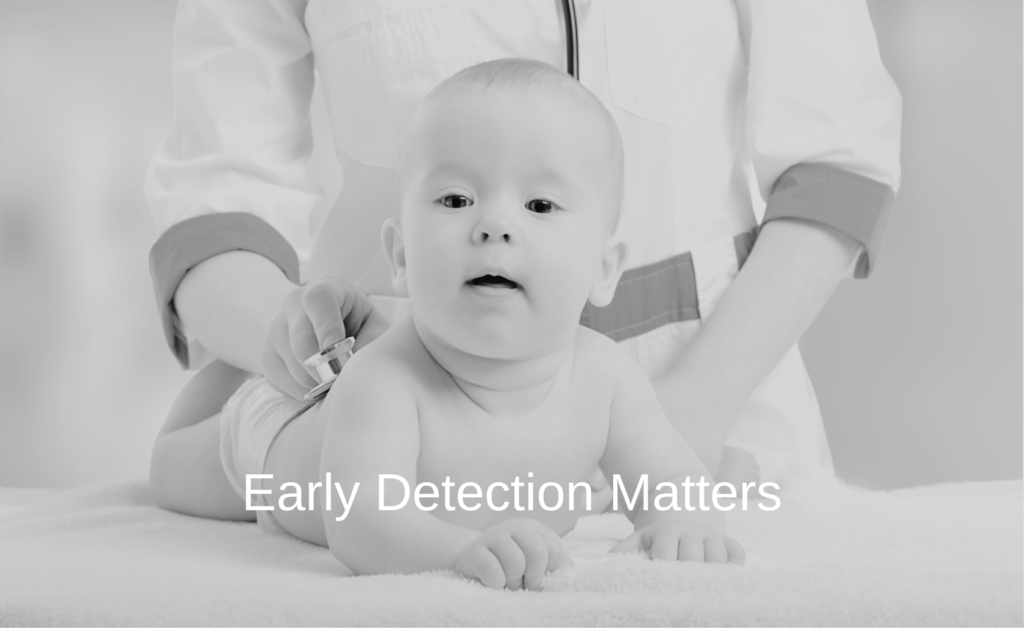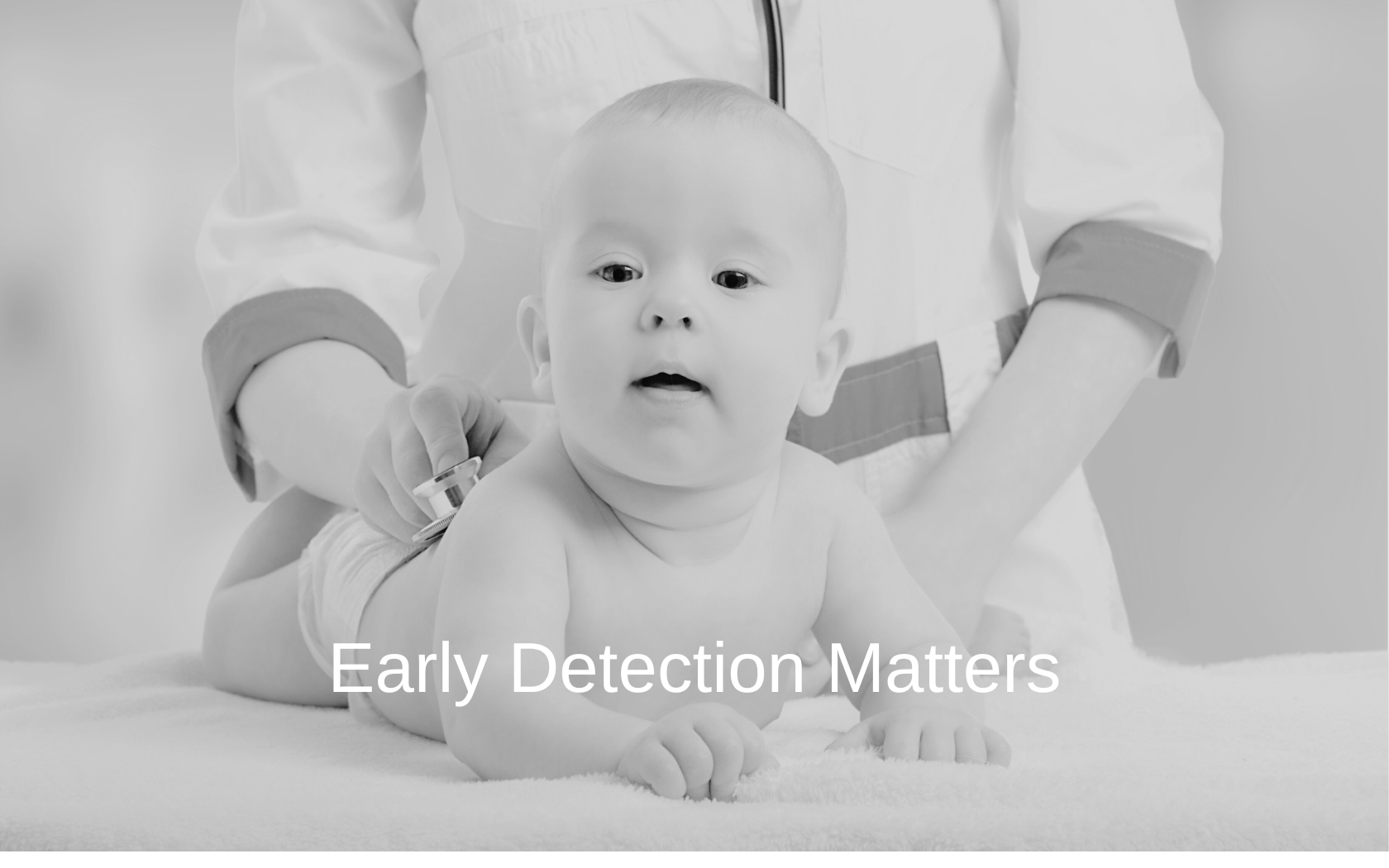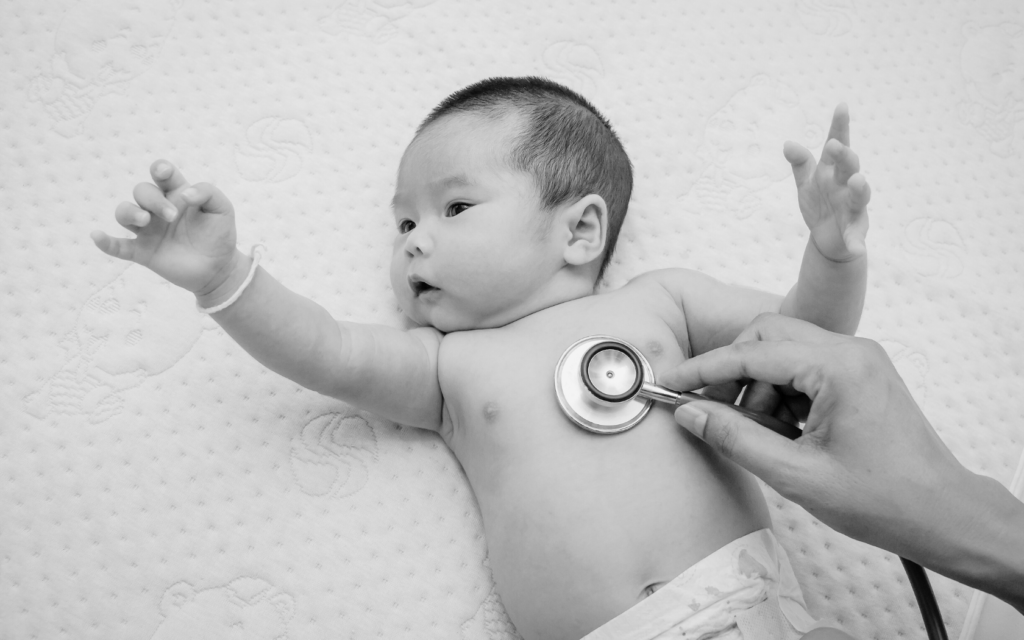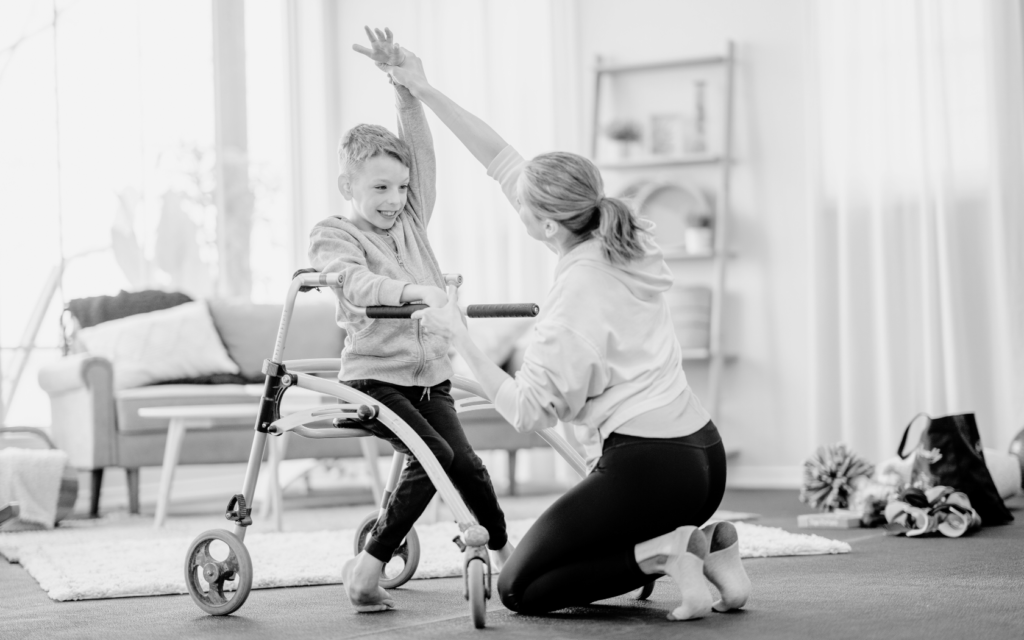As a parent, few things are more terrifying than the unknown. You watch your child closely, scrutinizing every movement, because your doctor said they might have cerebral palsy. Questions swirl in your mind: When is cerebral palsy diagnosed? How will I know if my child has it?
If your baby has cerebral palsy, it’s understandable that you’d want to know right away. While there’s no cure for this movement disorder, children with CP who get early treatment have a better chance of lessening their symptoms.
Below, we’ll explore how cerebral palsy in infants is detected and diagnosed. Although we can’t provide medical advice, we aim to provide clarity and support for parents navigating this challenging path.


How Early Can Cerebral Palsy Be Detected?
The latest research says that cerebral palsy can be detected before six months (corrected age). Corrected age is a way to measure the developmental age of a preterm baby.
To calculate the corrected age, you subtract the number of weeks a baby was born early from the baby’s actual age since birth. For example, if a baby is 6 months old but was born 8 weeks early, you would subtract 8 weeks from 6 months (24 weeks), giving a corrected age of 4 months.
But parents and doctors can’t always spot cerebral palsy this early. In fact, the National Institute of Child Health and Human Development asserts that most children with CP aren’t diagnosed until age 2 or later.

Early Signs and Symptoms of Cerebral Palsy
Parents whose children haven’t yet received a diagnosis often suffer waves of anxiety and floods of questions. Why isn’t she sitting up yet? Why are his movements so stiff and jerky?
Failing to sit up by the developmentally appropriate age isn’t always a sign of CP. But you should watch your child’s movements closely, especially if you had a traumatic birth in which the baby may have suffered a brain injury. You’re the one who spends the most time with your child. If you notice something abnormal, tell your doctor right away.
Here’s a general timeline of early symptoms of cerebral palsy in infants:
Before 6 Months
Signs in newborns can be subtle and easily missed. Here’s what to watch out for:
- Muscle stiffness
- Floppiness
- Delayed milestones (such as not rolling over or sitting up when they should be able to)
- Unusual posture
- Crosses legs when picked up
- “Pulls away” when held
- Thumbs bend toward the palms constantly
6 to 12 Months
During this period, more noticeable signs may emerge. You might notice the following:
- Delays in reaching milestones like sitting, crawling, or walking
- Stiff or floppy limbs
- Unusual movements
- Baby keeps one hand balled in a fist
- Trouble bringing hands together or bringing hands to mouth
12 to 24 Months
By age 2, many children with CP show clear signs that can lead to a diagnosis. These signs include significant delays in motor skills, persistent primitive reflexes, and abnormal muscle tone.
You might also notice these abnormal movements:
- Baby “scoots” on the buttocks instead of crawling
- Lopsided crawling, where the baby drags one hand and leg
- Baby can’t stand on his own
After 2 years
When is cerebral palsy diagnosed if the symptoms are very mild? Usually, after 2 years, because mild symptoms are harder to detect. They include:
- Coordination issues
- Mild muscle stiffness or weakness
- Balance problems
- Subtle difficulties with fine motor skills (such as writing or buttoning clothes)
- Slight speech and language delays
- Occasional involuntary movements or tremors

Treatment for Cerebral Palsy in Infants
Early detection of CP means a child gets early treatment. It can improve a child’s quality of life in a huge way. Treatment for cerebral palsy in infants could include:
- Physical therapy
- Occupational therapy
- Speech and language therapy
- Medications
- Orthotics and assistive devices
- Surgery
- Botox injections (for children considered old enough)
Let’s consider an example. A child’s parents notice their baby isn’t meeting typical milestones like sitting up or crawling. They consult their pediatrician, who refers them to a specialist.
The baby starts physical and occupational therapy right away. By the time she’s two, she can walk with the help of a walker, feed herself, and communicate her needs well.
In contrast, imagine a baby whose parents are worried about his development, but a doctor brushes off their concerns. The doctor reassures them that “every child is different” and “boys develop slower”.
As a result, the boy isn’t diagnosed with cerebral palsy until age three. He misses out on crucial early intervention. He struggles with mobility, has difficulty with basic self-care tasks, and his speech is significantly delayed. A late start with therapy meant his progress is slower.
When cerebral palsy is diagnosed late, outcomes tend to be worse. In certain cases, doctors misdiagnose cerebral palsy or fail to treat it. This may constitute medical malpractice if it makes a significant impact on the child’s condition and development. We invite you to contact our experts if you’d like to find out whether you have a potential malpractice case.
Diagnosis of Cerebral Palsy FAQs
According to the National Institute of Neurological Disorders and Stroke, most kids with cerebral palsy get their diagnosis around age 2. Some are diagnosed later if their symptoms are mild. Usually a child is diagnosed at age 5 at the latest.
One major symptom of cerebral palsy is muscle stiffness or spasticity. Muscle stiffness makes muscles tight and can limit movement. Spasticity affects a child’s ability to control their movements. It’s most noticeable in the arms and legs. You might notice the child has difficulty with walking, posture, and coordination.
Mild cerebral palsy has subtle symptoms. Children with mild CP often reach milestones a bit later than their peers. Look for mild spasticity, like slight stiffness in one limb or on one side of the body (hemiplegia).
A child with mild CP might have difficulty with tasks requiring fine motor skills. They could have trouble writing or buttoning a shirt, or may appear a bit clumsy. When walking, they might have an uneven gait, limp, or drag one foot.




